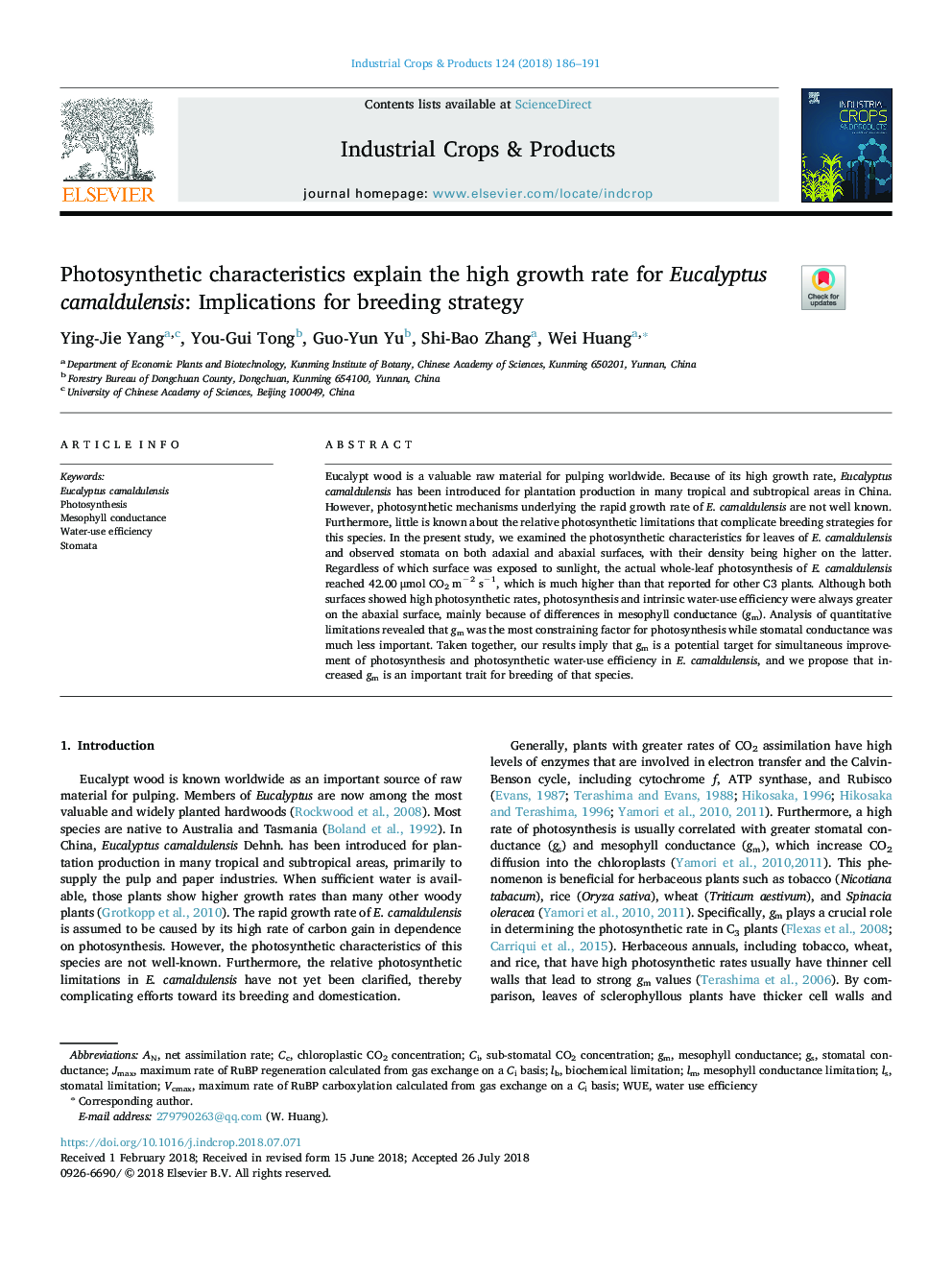| Article ID | Journal | Published Year | Pages | File Type |
|---|---|---|---|---|
| 8879582 | Industrial Crops and Products | 2018 | 6 Pages |
Abstract
Eucalypt wood is a valuable raw material for pulping worldwide. Because of its high growth rate, Eucalyptus camaldulensis has been introduced for plantation production in many tropical and subtropical areas in China. However, photosynthetic mechanisms underlying the rapid growth rate of E. camaldulensis are not well known. Furthermore, little is known about the relative photosynthetic limitations that complicate breeding strategies for this species. In the present study, we examined the photosynthetic characteristics for leaves of E. camaldulensis and observed stomata on both adaxial and abaxial surfaces, with their density being higher on the latter. Regardless of which surface was exposed to sunlight, the actual whole-leaf photosynthesis of E. camaldulensis reached 42.00âμmol CO2âmâ2 sâ1, which is much higher than that reported for other C3 plants. Although both surfaces showed high photosynthetic rates, photosynthesis and intrinsic water-use efficiency were always greater on the abaxial surface, mainly because of differences in mesophyll conductance (gm). Analysis of quantitative limitations revealed that gm was the most constraining factor for photosynthesis while stomatal conductance was much less important. Taken together, our results imply that gm is a potential target for simultaneous improvement of photosynthesis and photosynthetic water-use efficiency in E. camaldulensis, and we propose that increased gm is an important trait for breeding of that species.
Keywords
Related Topics
Life Sciences
Agricultural and Biological Sciences
Agronomy and Crop Science
Authors
Ying-Jie Yang, You-Gui Tong, Guo-Yun Yu, Shi-Bao Zhang, Wei Huang,
